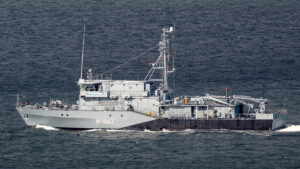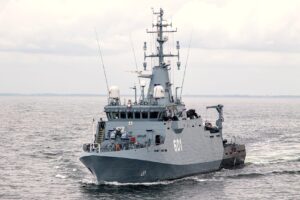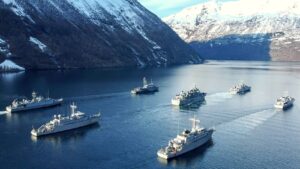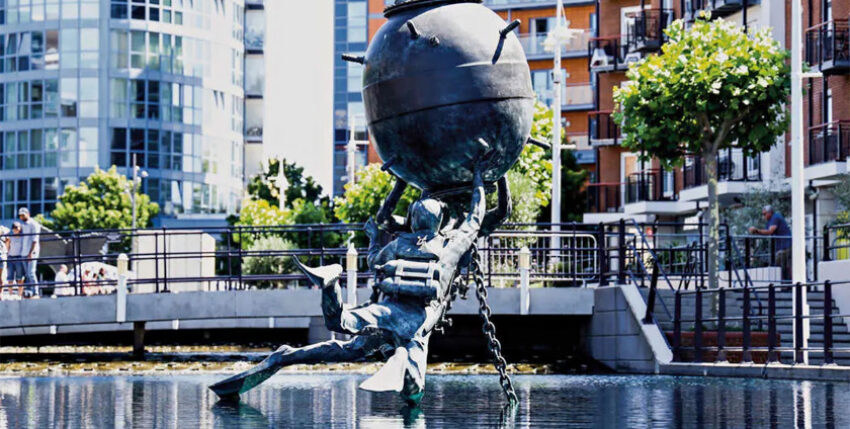In Portsmouth, the large Royal Navy base on the south coast of England, a memorial was presented to the public in the presence of numerous naval personnel to commemorate and honour the life-threatening work of British and allied mine divers during the Second World War. It is an old anchor mine with its highly sensitive "horns", which trigger the firing mechanism by kinking when touched. Two divers approach it from below to release it and let it float to the surface, to defuse it or to attach an explosive charge. One wrong move means instant death. This impression of danger is also conveyed by the filigree sculptural work and the lifelike appearance of the bronze sculpture, which cost around 300,000 euros. However, it stands in bright daylight - the mine divers do this at best in semi-darkness, if not in the least visibility in murky, flowing water.

Legacy munitions
However, the memorial is also a reminder that there are still considerable quantities of munitions lying at the bottom of the seas around the European continent. Authorities and institutes estimate that more than 1.5 million tonnes remain in German waters in the North and Baltic Seas alone. It is not only the alarmingly poor condition of the containers of explosives, detonators and toxic substances, but also the numerous planned offshore wind farms that are bringing the issue of removing contaminated sites increasingly to the fore: at least in the large-scale areas of future energy generation from wind turbines, a thorough basic search must be carried out before construction begins to ensure safety during construction and operation. The same applies to the routes of underwater cables and pipelines. Soil cleaning based on economic pressure is good news, but wind farms and routes also have their narrow limits. And technical planning is usually only carried out in unpolluted areas - because of the costs. For the majority of all sea areas, however, cleaning up the zones of suspected or identified hazardous waste disposal, munitions dumping and mine laying is a national task.

Mine stocks
The Royal Navy's statement that only two thirds of all the sea mines deployed by the various warring parties during the Second World War have been detected or proven to date is thought-provoking. Of course, there is a lot of wastage due to self-ignition, rusting and displacement, but theoretically they still pose a danger - and some are still being found today. And unfortunately there are more and more of them - at least in the Black Sea!
Task in the alliance
Searching for and removing old munitions are tasks for specialised companies and the naval forces - especially those of the NATO countries when it comes to Europe. Minehunting boats and mine diving units are the national resources for these tasks. In the Alliance, as part of the NATO Response Forces (NRF), these are the Standing NATO Mine Coutermeasures Group 1 (SNMCMG), primarily for the northern area of the North Sea/Baltic Sea and neighbouring seas, and the SNMCMG2 for the Mediterranean region. They are made up of several mine countermeasure vessels (including those capable of laying mines) and supply units from all maritime member states. Their work and activities - wherever deployed - serve not only military security, but also the security of shipping, fishing and energy production around Europe in general.

Incidentally, the German Navy is continuously involved in all four NATO Standing Maritime Groups - as the only European member.










